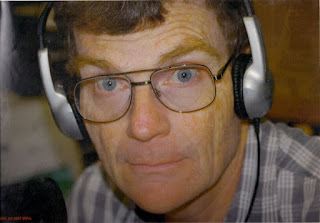Simple antennas for the Hawaii Island Amateur Radio Operator--a continuing series
I've managed to get a few days off from my substitute teaching position at Laupahoehoe High and Elementary School. The state Department of Education was able to hire a full-time Special Education Teacher this term, thus ending a full-month of my emergency service to the school. I'm due for another assignment Friday. Eversince I retired from the commercial broadcast business last September (2011), I've been busy doing substitute teaching at the high school and doing a small amount of special projects for my former employer (Pacific Radio Group). All told, retirement has been a shift to other work with more amateur radio mixed in. At least I don't have to get up each morning at 0230W and drive into work. I followed that routine for 36 years. The old job was great, but it was time for a change. Nowadays, my schedule is a bit more free and my amateur radio pursuits a lot more fun. As I eased into semi-retirement, I began to reenter the world of ham radio after ma
